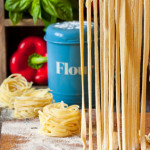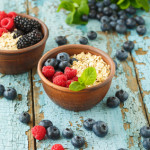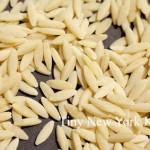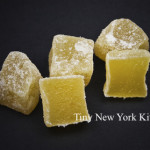Keeping Resolutions To Get Healthier
People often set their goals too high or don’t take the time to plan out how they’re going to accomplish their resolution. The hardest part of starting anything, especially a healthy living plan, is making that goal a top priority. Create an achievable and specific goal that’s grounded in micro-actions that you can start right now. These simple baby steps can keep you motivated. Here are some ways to begin your path to getting healthier. Just start where you are!
Get More Physically Active
Make it happen by entering it into your schedule. Increase your exercise routing from three to four days per week by adding a 20-minute strength training session on Fridays this month.
Go To Bed Earlier
If your goal is to get to sleep earlier, start by determining how much earlier and how often you will practice this routing. Start with 5 to 10 minutes. The alarm on your phone can help you by setting cues. Build up from there.
Get Up Earlier
Begin with a manageable goal, like waking up ten minutes earlier, which is easier than waking up an hour earlier. Then every other month reset your alarm another 10 minutes earlier.
Eat More Vegetables
More vegetables more often can be your mantra for 2021. Try adding one new vegetable to dinner meals that you make at home this month.
Spend More Time Outdoors
Take a break to for a 15-minute walk outdoors. The fresh air is good for you. Make a daily habit of it.
Pack Your Lunch
Packing your lunch is a good place to start when you’re trying to eat healthier. You can ease the burden by doubling up on the vegetables that you prep at dinnertime two or three times per week, then bring the leftovers to work.
Eat Regular Meals And Snacks
Stashing a piece of produce in your purse can go a long way when you’re stuck waiting in traffic on your way home from work. A healthy snack can keep you from feeling ravenous, and potentially overeating, at your next meal. Make it your goal to pack at least one apple, pear, or bag of carrots in your bag every day so you can snack when you’re in transit.
Drink More Water
Drinking water has a myriad of benefits, but one of the unsung ones is that it forces you to get up and move periodically throughout the day. Hydrate every hour to get every hour.
Limit Alcoholic Beverages
If grabbing drinks after work with coworkers for the purpose of networking interferes with your desire to drink less, consider multi-tasking. Scheduling a walk or exercise class with a colleague can help you clock extra activity and leave you feeling revived rather than depleted. Plan ahead to make sure these new networking events make it to your calendar as often as work drinks used to surface.
Write Down Your Goals and include the steps you will take to keep it. Having a clearly articulated goal and a plan of action is vital for success.
Keep things simple. Break a big goal into a series of smaller goals. Want to lose 50 pounds? Shoot for losing 5 percent of your body weight first, or set five 10-pound incremental weight loss goals.
Mark your achievements. Each time you make a small lifestyle change aimed at reaching your goal (adding five minutes to your daily walk for instance) put a star on your calendar so you can see your progress.
Start with small changes. If weight loss or a healthier lifestyle is your goal, begin with a simple step like swapping one snack per day for a piece of fruit. The benefits will add up without majorly impacting your lifestyle.
Tap the power of a streak. Let’s say you keep your resolution for a week, or two weeks, or a month. That’s a fabulous streak and you can let it drive you. And if something happens to force you to break it then start a new streak!
And Remember….Just Start Where You Are!
©Tiny New York Kitchen © 2021 All Rights Reserved
This holiday season, whether you are planning your usual celebrations or making new smaller traditions it is important to balance holiday favorites and healthful options that are delicious. Sticking to wellness goals can be challenging during the holidays. Here are some tips to help you stay on track.
Pack Healthful Snacks For Travel
If you’re traveling this holiday season it can be challenging to eat healthy. Rest stops, gas stations, and airports aren’t known for healthful snack options. Pack your own for holiday trips. Try apples or bananas paired with nut butter, trail mix, or pre-cut vegetables with hummus cups. Be sure to fill up your water battle, too.
Mindful Eating
Mindfulness is the practice of being present and in the moment and can help you fully enjoy each eating experience. Turn off technology, set the table and eat slowly, using all of your senses with each bite. These habits can help you tune into your hunger cues and allow you to savor your meals without overdoing it. Plus, mindfulness can help you fully engage in the time you’re spending with loved ones.
Work In A Workout
When you’re in the thick of holiday prep, your exercise routine may fall by the wayside. Since you can’t add more hours to the day, fit in exercise when you can by parking farther away at the grocery store or taking the stairs at the mall.
Indulge Your Sweet Tooth Mindfully
There are many holiday treats to choose from. Plan to pick out your favorites and truly savor them. That will make it easier to skip the rest. If you stick to your normal healthy eating patterns most of the time, you will come out of the holiday season satisfied but not over stuffed.
©Tiny New York Kitchen © 2020 All Rights Reserved
Keeping a house clean is important and keeping your cleaning arsenal simple and healthy is even more important.
Store your DIY concoctions in glass bottles, which contain no harmful chemicals and are better for the environment than plastic. Look for a brown variety to help keep light from breaking down compounds within.
Use essential oils. They smell wonderful, but many plant-derived essential oils also possess antimicrobial attributes, meaning they can help negate unwanted elements such as bacteria, fungi, and viruses. Add a drop or two to a cleaning solution to amp up the aroma and the cleaning power.
All-Purpose Cleaning Spray
Make this your go-to cleaner.
1 1/4 Cups Water
1/2 Cup White Vinegar
10 Drops Essential Oil
Pour ingredients into a glass spray bottle, using a funnel if you have one, and mix contents. Spray liberally on surfaces and wipe clean with a soft cleaning cloth.
Sink Scrub
Works on porcelain, stainless- steel, acrylic, copper, stone, and solid surfaces.
2 Cups Baking Soda
20 Drops Essential Oil
Castile Soap Or Dish Soap
Put baking soda in container. Add essential oils and stir to combine. Wet sink, sprinkle scrub liberally, add a squirt or two of castile or dish soap, and scrub. Rinse thoroughly.
Glass & Mirror Cleaning Spray
Toss the blue stuff and use this instead.
2 Cups Water
2 Tablespoons White Vinegar
2 Tablespoons Rubbing Alcohol
5 Drops Peppermint Essential Oil
Pour ingredients into a glass spray bottle, attach sprayer, and shake to mix.
“Work With What You Got!”
©Tiny New York Kitchen © 2020 All Rights Reserved
Start small, with goals that work for you and your family. These are the habits you’ll keep in the long run.
1. Add More Color To Your Plate
More color on your plate means more variety, more nutrients, and more flavor. The next time you shop, try putting the rainbow in your cart: orange citrus, yellow pineapple, and dark leafy greens.
2. Eat Seasonally
Keep a produce calendar handy so you know what to look for. In season produce is fresher and typically less expensive. January is good for root vegetables, kale, and citrus.
3. Drink More Water
Stay hydrated by infusing your water with citrus slices, herbs, berries, or cucumber. Making water more interesting will encourage you to drink more.
4. Try A Whole Grain Swap For Pasta And Bread
Once in a while replace regular pasta and bread with a whole grain alternative. These complex carbs will help you feel full. Look for whole wheat, whole grain, and multigrain alternatives.
5. Pack Your Snacks
Opt for high fiber and protein snacks like hummus and pretzels or apples and peanut butter. Unlike sugar and empty carbs, fiber ad protein will keep you full.
6. Eat Breakfast More Often
Stock up on on-the-go options. Egg muffins in the freezer, instant oatmeal in the pantry, and a bowl of fruit on the counter. The morning rush won’t be an excuse for skipping this important meal.
7. Make A Shopping List
Check your refrigerator, freezer, and pantry before making a list. Organize your list based on the layout of your store. You’ll save time at the store and won’t accidently buy what you already have.
8. Try A Plant-Based Swap For Meat
Try a meatless version of a weeknight staple like burgers, pizza, or pasta. You’ll get more nutrients into your meals by swapping meat for plant-based options.
9. Stock Your Freezer
Keep staples like frozen meatballs or chicken tenders and steam-in-bag vegetables for last minute meals. A fully stocked freezer is better than takeout. You’ll save money and get dinner on the table even on busy weeknights.
10. Reduce Your Food Waste
Use overripe fruit in smoothies and muffins. Turn leftover vegetables into stir fries and soups. Turning leftover produce into nutrient-dense meals is a win-win for your wallet and your health.
11. Make A Meal Plan
Write meals on the calendar at the start of the week. Everyone knows the menu and you won’t be scrambling for dinner ideas at 5pm.
12. Bring Your Lunch 3 Days Per Week
Instead of swearing off midday takeout, start with 3 days a week. When you pack school lunches, pack office lunches too. You’ll save time waiting in line, save money, and eat better.
13. Try A New Recipe
Shake up your dinner routine with a recipe or ingredient you haven’t use before. You’ll avoid a recipe rut and learn new kitchen skills.
14. Eat Out One Less Time Each Week
Try a speedy dinner or slow cooker meal that’s ready when you get home. Home cooked meals allow you to control the ingredients and choose more healthful options.
15. Drink Less Soda
Swap for flavored seltzer, iced tea, or sparkling fruit juice. Instead of cutting out soda try drinking 1 less can a day. Quitting cold turkey makes habits hard to break. Start with a smaller goal and eventually it will make a big difference.
16. Eat Together One More Night Each Week
Make dinner device-free, with everyone eating together. Keep it fun with a top-your-own taco, baked potato, or burger night. Enjoying a meal together as a family has been shown to encourage healthy eating habits and better communication.
17. Cook With Your Children Once A Week
Children who help choose, shop for, and prepare a recipe will be more interested in eating it.
18. Get Ahead On Sunday
Prep components instead of entire meals. Roast vegetables, cook grains, and bake extra chicken, then mix and match for quick lunches and dinners during the week. Planning ahead helps you save time, eat better, and reduce the stress of busy weeks.
19. Embrace Healthy Fats
Look for sources of unsaturated fats, like olive oil, nuts, seeds, and avocados. Good-for-you fats help regulate cholesterol, absorb vitamins, and prevent heart disease.
20. Give Plants More Plate Real Estate
Fill about half of your dinner plate with plants, then divide the rest between your starch and protein. Rebalancing your plate is an easy way to eat healthfully.
“Work With What You Got!”
©Tiny New York Kitchen © 2019 All Rights Reserved
There are a few pasta cooking rules that are important to memorize and you’ll have perfect pasta every time.
Boil your noodles in well-salted water, save that pasta liquid to make the glossiest pan sauce, do not rinse cooked pasta, and always pass extra grated parmesan cheese at the table.
“Work With What You Got!”
©Tiny New York Kitchen © 2019 All Rights Reserved
Here is another use for the whole grains and seeds that you’re seeing at the store. Top off with delicious flavoring, which are also tasty on oatmeal.
Amaranth (3/4 Cup)
Bring 2 1/4 cups water or milk to boil in saucepan. Stir in amaranth. Reduce heat to low, cover and simmer until tender. Cooking time is 25 to 30 minutes. Stir occasionally. Remove from heat and mix in or top with dried cherries, coconut sugar, macadamia nuts, vanilla, banana, or cacao nibs. Serves 2
Millet (3/4 Cup)
Bring 1 1/2 cups water or milk to boil in saucepan. Stir in millet. Reduce heat to low, cover and simmer until tender. Cooking time is 15 to 20 minutes. Stir occasionally. Remove from heat and mix in or top with chopped dates, demerara sugar, hazelnuts, cloves, clementine, or granola. Serves 2
Quinoa (3/4 Cup)
Bring 1 1/2 cups water or milk to boil in saucepan. Stir in quinoa. Reduce heat to low, cover and simmer until tender. Cooking time is 15 to 20 minutes. Stir occasionally. Remove from heat and mix in or top with dried apricots, agave syrup, pine nuts, cardamom, blueberries, or toasted coconut.
Serves 2
“Work With What You Got!”
©Tiny New York Kitchen © 2018 All Rights Reserved
Orzo is the Italian word for barley; however, orzo is not made from barley at all, but rather from semolina, which is a course ground flour made from durum wheat. With its shape reminiscent of slivered almonds, orzo cooks up in about half the time of rice, making it a speedy standby to have on hand to add heartiness to meals.
Just bring 3 quarts of lightly salted water to a boil. Add 8 ounces ( 1 1/2 cups) dried orzo and boil about 10 minutes until it has a firm, chewy texture. Stir occasionally to prevent it from sticking together. Drain orzo in colander and serve immediately.
Rinse orzo only if it will be baked or served cold in a salad. Otherwise, do not rinse as rinsing removes a light coating of starch that helps sauces and seasonings cling to the pasta.
For the best texture and flavor serve orzo immediately after cooking. If your orzo gets done before the rest of the meal, you can keep it warm by returning the cooked drained pasta to the warm cooking pan. Stir in a little butter or olive oil to prevent it from sticking together. Cover the pasta with a lid and let it stand no more than 14 minutes.
“Work With What You Got!”
© Victoria Hart Glavin Tiny New York Kitchen © 2017 All Rights Reserved
Crystallized ginger is fresh ginger that has been slowly cooked in sugar water and rolled in coarse sugar for preservation. It has a sweet, spicy taste and can easily be made at home.
“Work With What You Got!”
© Victoria Hart Glavin Tiny New York Kitchen © 2017 All Rights Reserved















